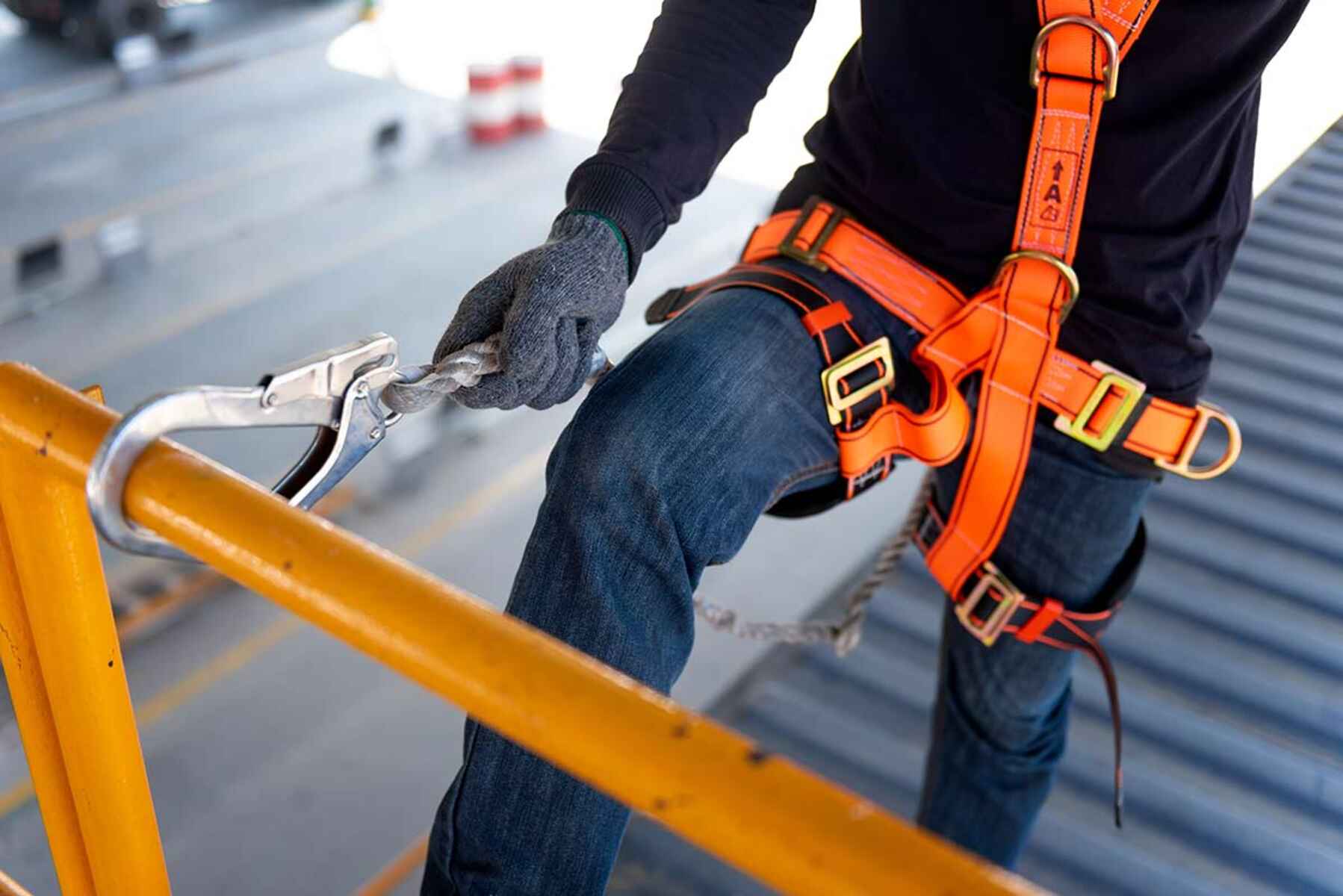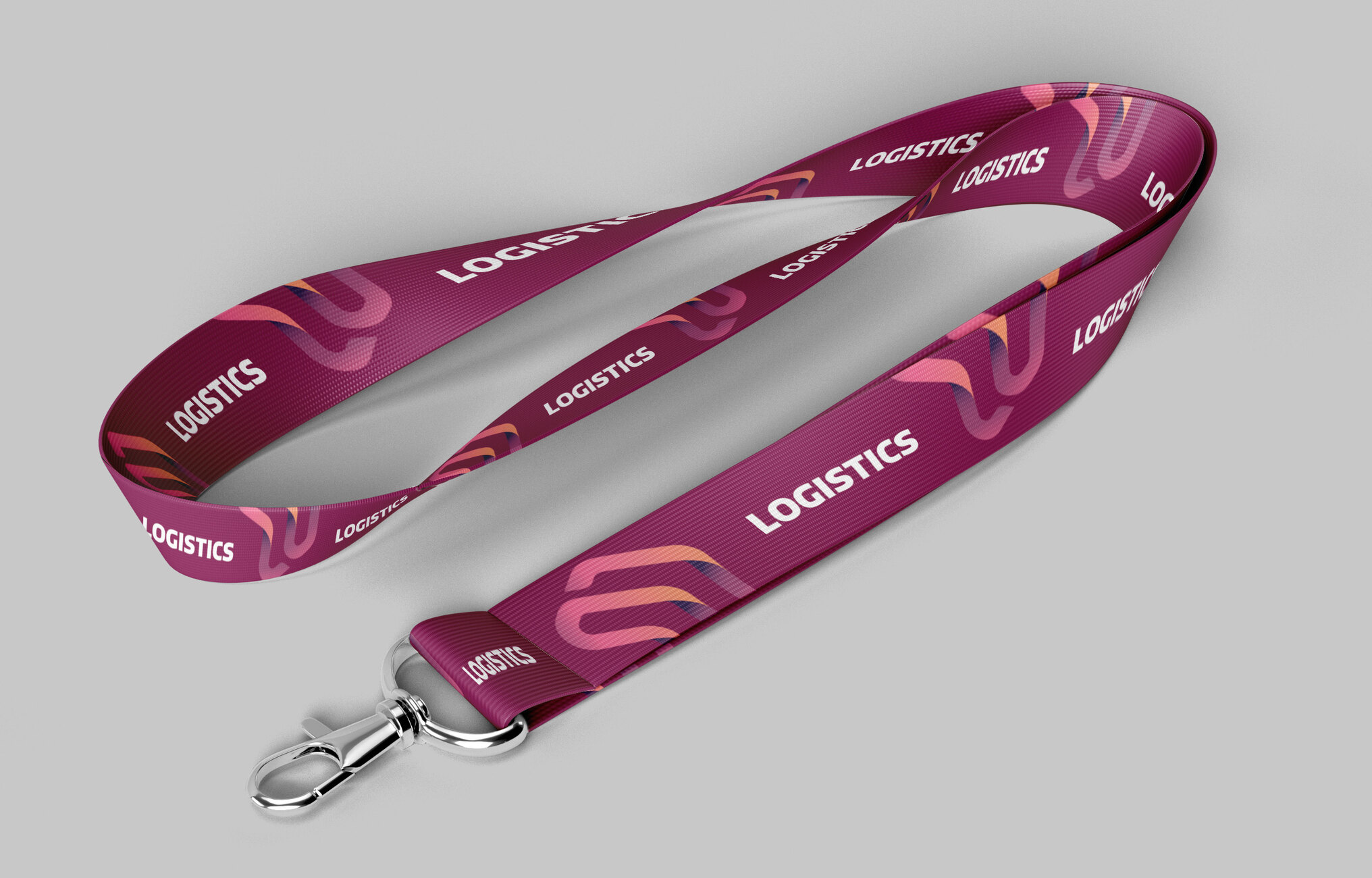Importance of Safety Precautions
Safety precautions are paramount when it comes to using harnesses and lanyards for any activity, whether it's rock climbing, construction work, or any other task that involves working at heights. These precautions are not just guidelines; they are the lifeline that ensures the well-being and security of individuals in potentially hazardous situations.
Harnesses and lanyards are designed to protect individuals from falls and to provide support while working at elevated heights. However, without the proper safety precautions in place, the risk of accidents and injuries significantly increases. By adhering to safety measures, the likelihood of accidents is minimized, and the overall safety and efficiency of the task at hand are greatly enhanced.
It's important to recognize that safety precautions are not just for compliance; they are a fundamental part of responsible and ethical use of equipment. Prioritizing safety precautions demonstrates a commitment to the well-being of oneself and others, fostering a culture of accountability and care within any environment where harnesses and lanyards are utilized.
In summary, the importance of safety precautions cannot be overstated. They serve as the foundation for a secure and productive work environment, providing peace of mind and confidence to individuals utilizing harnesses and lanyards in various settings.
Understanding Harnesses and Lanyards
Harnesses and lanyards are essential components of fall protection systems, designed to safeguard individuals working at heights. Understanding the intricacies of these safety tools is crucial for ensuring their effective use and maximizing the protection they provide.
Harnesses:
A harness is a network of straps, buckles, and attachment points that secure around the user's body, distributing the force of a fall across the strongest parts of the body. Modern harnesses are ergonomically designed to provide comfort and freedom of movement while offering reliable fall arrest capabilities. They typically feature adjustable leg and shoulder straps, chest buckles, and dorsal attachment points for connecting lanyards or other fall protection devices.
Lanyards:
Lanyards are flexible ropes or straps that connect the harness to an anchorage point, allowing users to move about while maintaining a connection to a secure structure. They come in various forms, including shock-absorbing lanyards, positioning lanyards, and restraint lanyards, each serving specific purposes based on the nature of the work being performed.
Compatibility:
It's crucial to ensure that the harness and lanyard are compatible and compliant with relevant safety standards. This includes checking for proper certification and inspecting for any signs of wear or damage that could compromise their integrity. Additionally, understanding the weight capacity and intended use of the harness and lanyard is essential for selecting the appropriate equipment for the specific task at hand.
Functionality:
Harnesses and lanyards are not one-size-fits-all. Different industries and activities require specialized equipment tailored to the unique demands of the job. Understanding the functionality and limitations of harnesses and lanyards allows users to make informed decisions when selecting and utilizing fall protection gear.
In essence, comprehending the design, functionality, and compatibility of harnesses and lanyards is fundamental to ensuring the safety and well-being of individuals working at heights. By gaining a thorough understanding of these critical components, users can effectively mitigate the risks associated with working in elevated environments, fostering a culture of safety and confidence in their occupational pursuits.
Inspecting Equipment Before Use
Prior to utilizing harnesses and lanyards, a comprehensive inspection of the equipment is imperative to ensure its reliability and functionality. This pre-use assessment serves as the first line of defense against potential hazards and plays a pivotal role in safeguarding individuals working at heights. The inspection process involves a meticulous evaluation of both the harness and lanyard, encompassing various critical aspects to ascertain their suitability for the intended task.
Harness Inspection:
- Webbing and Stitching: Thoroughly examine the webbing for any signs of fraying, cuts, or abrasions. Pay close attention to the stitching, ensuring it is intact and free from loose threads or irregular patterns.
- Hardware Components: Inspect all buckles, D-rings, and other hardware for deformities, corrosion, or any form of damage that could compromise their structural integrity.
- Labels and Markings: Verify that the harness is equipped with clear and legible labels indicating the date of manufacture, inspection records, and compliance with relevant safety standards.
Lanyard Inspection:
- Shock Absorber: If the lanyard is equipped with a shock-absorbing mechanism, inspect it for any signs of deployment or damage. Ensure that the shock absorber has not been previously activated, as this could compromise its effectiveness in the event of a fall.
- Connectors and Hooks: Check the connectors and hooks for secure attachment and proper functioning. Any distortion, rust, or malfunctioning components should be promptly addressed.
General Considerations:
- Cleanliness and Storage: Ensure that the equipment is clean and free from contaminants that could compromise its structural integrity. Proper storage is also crucial to prevent exposure to damaging elements such as sunlight, moisture, or chemicals.
- Previous Damage: If the harness or lanyard has been subjected to a fall or impact, it should be immediately taken out of service and thoroughly inspected by a competent person before further use.
By meticulously inspecting the harness and lanyard before each use, individuals demonstrate a commitment to their safety and well-being. This proactive approach not only mitigates the risks associated with working at heights but also fosters a culture of accountability and diligence in ensuring the reliability of fall protection equipment. Regular and thorough inspections serve as a cornerstone of a robust safety protocol, instilling confidence and peace of mind in those relying on harnesses and lanyards for their occupational pursuits.
Proper Fitting of Harnesses
Achieving a proper fit for a harness is not only essential for comfort but, more critically, for ensuring effective fall protection. A well-fitted harness significantly reduces the risk of injury in the event of a fall, as it distributes the impact forces across the body's strongest areas. Proper fitting also minimizes the likelihood of the user slipping out of the harness during a fall, a scenario that can have severe consequences.
Key Steps for Proper Fitting:
-
Adjusting Straps: Begin by loosening all straps to their maximum length. Put on the harness and fasten the leg and shoulder straps, ensuring they are snug but not overly tight. The chest strap should be positioned across the chest at the sternum level, allowing for comfortable breathing without restricting movement.
-
Leg Strap Positioning: The leg straps should be adjusted to sit securely around the thighs without causing discomfort or restricting circulation. Ensure that the straps are free from twists and that the buckles are properly secured.
-
Shoulder Strap Alignment: The shoulder straps should be adjusted to sit comfortably over the shoulders without cutting into the skin or causing chafing. The straps should be symmetrical, with equal tension on both sides.
-
Dorsal Attachment: Verify that the dorsal attachment point is positioned centrally at the back and is free from any entanglements or obstructions. This attachment point is critical for connecting the lanyard or fall arrest system.
-
Functionality Check: Once the harness is fitted, perform a series of movements to ensure that it remains securely in place without excessive shifting or discomfort. The harness should allow for a full range of motion without compromising its integrity.
Importance of Proper Fitting:
A properly fitted harness not only enhances comfort and mobility but also plays a pivotal role in optimizing the functionality of fall protection equipment. Ill-fitting harnesses can lead to serious injuries or even fatalities in the event of a fall, as the forces exerted on the body may not be effectively dispersed.
Moreover, a comfortable and well-fitted harness encourages compliance with safety protocols. Users are more likely to wear their harnesses correctly and consistently when they are comfortable and do not cause undue discomfort during prolonged use.
In summary, the proper fitting of harnesses is a fundamental aspect of fall protection that cannot be overlooked. By prioritizing a secure and comfortable fit, individuals not only mitigate the risks associated with working at heights but also promote a culture of safety and responsibility in their occupational endeavors.
Checking Lanyard Compatibility
Ensuring the compatibility of lanyards with the specific requirements of a task is a critical aspect of fall protection. Lanyards come in various types, each designed for distinct purposes, and it is essential to select the appropriate lanyard that aligns with the nature of the work being performed. Compatibility encompasses factors such as length, shock-absorbing capabilities, and attachment mechanisms, all of which directly impact the effectiveness of the fall protection system.
Types of Lanyards:
Lanyards are available in different configurations, including shock-absorbing lanyards, positioning lanyards, and restraint lanyards. Each type serves a unique function, catering to specific work scenarios. Shock-absorbing lanyards, for instance, are designed to reduce the impact forces generated during a fall, while positioning lanyards facilitate hands-free operation in elevated positions. Understanding the distinctions between these lanyard types is crucial for selecting the most suitable option based on the task requirements.
Length Considerations:
The length of a lanyard directly influences the potential fall distance and clearance requirements. It is imperative to assess the work environment and determine the appropriate lanyard length to ensure that in the event of a fall, the user does not come into contact with lower-level obstructions. Additionally, considering the potential swing hazards and the need for a controlled descent is essential when selecting the lanyard length.
Attachment Mechanisms:
The compatibility of lanyards extends to the attachment mechanisms and anchor points utilized in the work area. Different lanyards may require specific connectors and anchorage points to ensure secure attachment. It is vital to verify that the lanyard connectors are compatible with the attachment points on the harness and the designated anchor structure, thereby establishing a robust and reliable connection.
Shock-Absorbing Capabilities:
For tasks involving potential falls, incorporating a shock-absorbing lanyard is often necessary to mitigate the impact forces on the user's body. Verifying the shock-absorbing capabilities of the lanyard and ensuring its compliance with relevant safety standards is crucial for providing an additional layer of protection in the event of a fall.
Specialized Requirements:
Certain work scenarios, such as confined space entry or rescue operations, may necessitate specialized lanyards equipped with unique features. Understanding the specific demands of the task and selecting lanyards tailored to these requirements is essential for ensuring comprehensive fall protection and operational efficiency.
In essence, checking lanyard compatibility involves a meticulous evaluation of the lanyard type, length considerations, attachment mechanisms, shock-absorbing capabilities, and specialized requirements. By prioritizing compatibility, individuals can effectively mitigate the risks associated with working at heights, fostering a culture of safety, precision, and attentiveness in their occupational pursuits.
Training and Familiarization with Equipment
Proper training and familiarization with harnesses and lanyards are indispensable components of a comprehensive fall protection program. Individuals who are tasked with working at heights must undergo thorough training to develop a profound understanding of the equipment, its functionalities, and the associated safety protocols. This training not only cultivates a heightened awareness of potential hazards but also empowers individuals to confidently and competently utilize fall protection gear in diverse work settings.
The training process should encompass a range of critical elements, including theoretical knowledge, practical application, and hands-on experience. Participants should be educated on the fundamental principles of fall protection, emphasizing the importance of harnesses, lanyards, and associated equipment in mitigating the risks of working at elevated heights. Understanding the physics of falls, the dynamics of fall arrest systems, and the principles of force distribution is pivotal for fostering a comprehensive grasp of fall protection concepts.
Furthermore, practical training sessions are essential for familiarizing individuals with the proper fitting and adjustment of harnesses, the selection and deployment of lanyards based on task requirements, and the correct procedures for connecting to anchorage points. Hands-on experience allows participants to internalize the intricacies of fall protection equipment, ensuring that they are adept at utilizing the gear effectively and confidently in real-world scenarios.
In addition to technical proficiency, training should also address emergency procedures, rescue protocols, and the proper response to fall incidents. Individuals must be equipped with the knowledge and skills to assess and mitigate fall hazards, as well as the ability to execute rescue operations if a fall occurs. This comprehensive training approach instills a sense of preparedness and resilience, ensuring that individuals are not only capable of preventing falls but also adept at responding to unforeseen circumstances with precision and composure.
Familiarization with equipment extends beyond initial training, encompassing ongoing reinforcement of knowledge and skills. Regular refresher courses, skill assessments, and scenario-based training exercises are essential for maintaining proficiency and ensuring that individuals remain abreast of best practices and industry standards. This continuous learning approach fosters a culture of vigilance, adaptability, and expertise, reinforcing the commitment to safety and excellence in fall protection endeavors.
In essence, training and familiarization with harnesses and lanyards are integral components of a robust fall protection strategy. By investing in comprehensive training and ongoing skill development, organizations and individuals not only enhance safety and compliance but also cultivate a culture of competence, confidence, and preparedness in the realm of working at heights.
Regular Maintenance and Inspection
Regular maintenance and inspection of harnesses and lanyards are fundamental prerequisites for ensuring the ongoing reliability and functionality of fall protection equipment. This proactive approach serves as a critical safeguard against potential hazards and plays a pivotal role in upholding the integrity of the gear utilized in various work environments. By adhering to a structured maintenance and inspection regimen, individuals and organizations demonstrate a commitment to the safety and well-being of those working at heights, fostering a culture of diligence and accountability in fall protection endeavors.
Scheduled Maintenance:
Establishing a scheduled maintenance routine is essential for preserving the optimal condition of harnesses and lanyards. This entails adhering to the manufacturer's guidelines regarding inspection intervals, maintenance procedures, and component replacement schedules. By adhering to these recommendations, individuals can mitigate the risks associated with wear and tear, environmental exposure, and prolonged usage, thereby ensuring that the equipment remains in a state of readiness for its intended protective function.
Visual Inspection:
A comprehensive visual inspection forms the cornerstone of regular maintenance efforts. This involves a meticulous evaluation of the harness and lanyard for any signs of damage, including fraying, cuts, abrasions, or deformities in hardware components. Additionally, inspecting for contamination, such as dirt, oil, or chemicals, is crucial for preserving the structural integrity of the equipment and preventing degradation due to environmental factors.
Functional Testing:
Beyond visual inspection, functional testing is imperative for verifying the operational capabilities of harnesses and lanyards. This may include conducting load-bearing tests, assessing the functionality of buckles and connectors, and testing shock-absorbing mechanisms for effective deployment. Functional testing provides assurance that the equipment is primed to perform as intended in the event of a fall, instilling confidence in its reliability and safety.
Documentation and Record-Keeping:
Maintaining comprehensive records of maintenance and inspection activities is essential for tracking the history of the equipment and adhering to regulatory requirements. Documenting inspection dates, findings, corrective actions, and component replacements facilitates traceability and accountability, serving as a vital resource for assessing the ongoing condition of harnesses and lanyards.
Professional Evaluation:
Engaging qualified professionals for periodic evaluations and testing of fall protection equipment is an indispensable aspect of regular maintenance. Competent individuals can conduct in-depth assessments, non-destructive testing, and structural evaluations to identify any underlying issues that may not be apparent during routine inspections, thereby ensuring a robust and thorough evaluation of the equipment's condition.
In essence, regular maintenance and inspection are paramount for upholding the reliability and effectiveness of harnesses and lanyards. By embracing a proactive approach to maintenance, individuals and organizations affirm their dedication to safety and compliance, fostering a culture of meticulousness and responsibility in the realm of fall protection. This commitment to ongoing maintenance and inspection serves as a cornerstone of a comprehensive safety strategy, ensuring that harnesses and lanyards remain steadfast guardians of individuals working at heights.
Emergency Procedures and Rescue Plans
Establishing comprehensive emergency procedures and rescue plans is an indispensable aspect of fall protection protocols. In the event of a fall or other emergency situation, swift and effective response mechanisms are crucial for mitigating potential harm and ensuring the safety of individuals working at heights. These procedures encompass a range of proactive measures designed to address fall incidents, provide timely assistance, and execute successful rescue operations when necessary.
Immediate Response Protocols:
Immediate response protocols are designed to guide individuals in swiftly addressing fall incidents and initiating the necessary emergency procedures. This includes activating communication channels to alert designated personnel, assessing the condition of the fallen individual, and providing immediate assistance, such as first aid, if required. Promptly securing the area to prevent further hazards and initiating the rescue plan are vital components of the immediate response protocols.
Rescue Plan Development:
A well-defined rescue plan outlines the systematic steps to be taken in the event of a fall, ensuring that a structured and coordinated response is enacted. The rescue plan should delineate the roles and responsibilities of designated rescue personnel, the utilization of appropriate rescue equipment, and the establishment of communication protocols to coordinate the rescue effort effectively. Identifying potential hazards, assessing the environment for safe rescue operations, and establishing clear evacuation routes are integral aspects of developing a robust rescue plan.
Training and Preparedness:
Training individuals in the execution of rescue plans and emergency procedures is paramount for ensuring a swift and proficient response to fall incidents. This involves familiarizing designated rescue personnel with the operation of rescue equipment, conducting simulated rescue scenarios, and reinforcing the importance of effective communication and coordination during rescue operations. Preparedness through regular training and drills fosters a culture of readiness and competence in executing rescue plans with precision and efficacy.
Equipment Accessibility and Maintenance:
Ensuring the accessibility and proper maintenance of rescue equipment is critical for the successful execution of rescue plans. This includes regular inspection and testing of rescue devices, such as descent systems, harnesses, and anchorage points, to verify their operational readiness. Additionally, strategically locating rescue equipment in easily accessible areas and providing clear instructions for utilization enhances the efficiency of rescue operations.
Post-Rescue Evaluation and Review:
Following a rescue operation, conducting a comprehensive evaluation and review of the response is essential for identifying areas of improvement and reinforcing effective practices. This includes analyzing the execution of the rescue plan, assessing the timeliness and efficacy of the response, and documenting any lessons learned to refine future emergency procedures and rescue plans. Continuous improvement through post-rescue evaluations contributes to the ongoing enhancement of fall protection protocols.
In essence, emergency procedures and rescue plans are pivotal components of a comprehensive fall protection strategy. By establishing structured response mechanisms, training personnel, maintaining rescue equipment, and conducting post-rescue evaluations, individuals and organizations demonstrate a steadfast commitment to the safety and well-being of those working at heights. These proactive measures not only mitigate the risks associated with fall incidents but also instill confidence and assurance in the preparedness to address unforeseen emergencies with competence and efficiency.

























